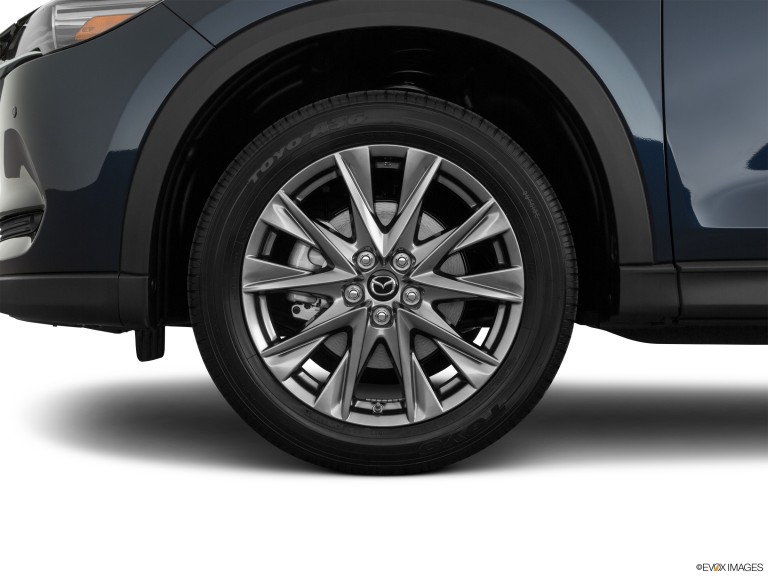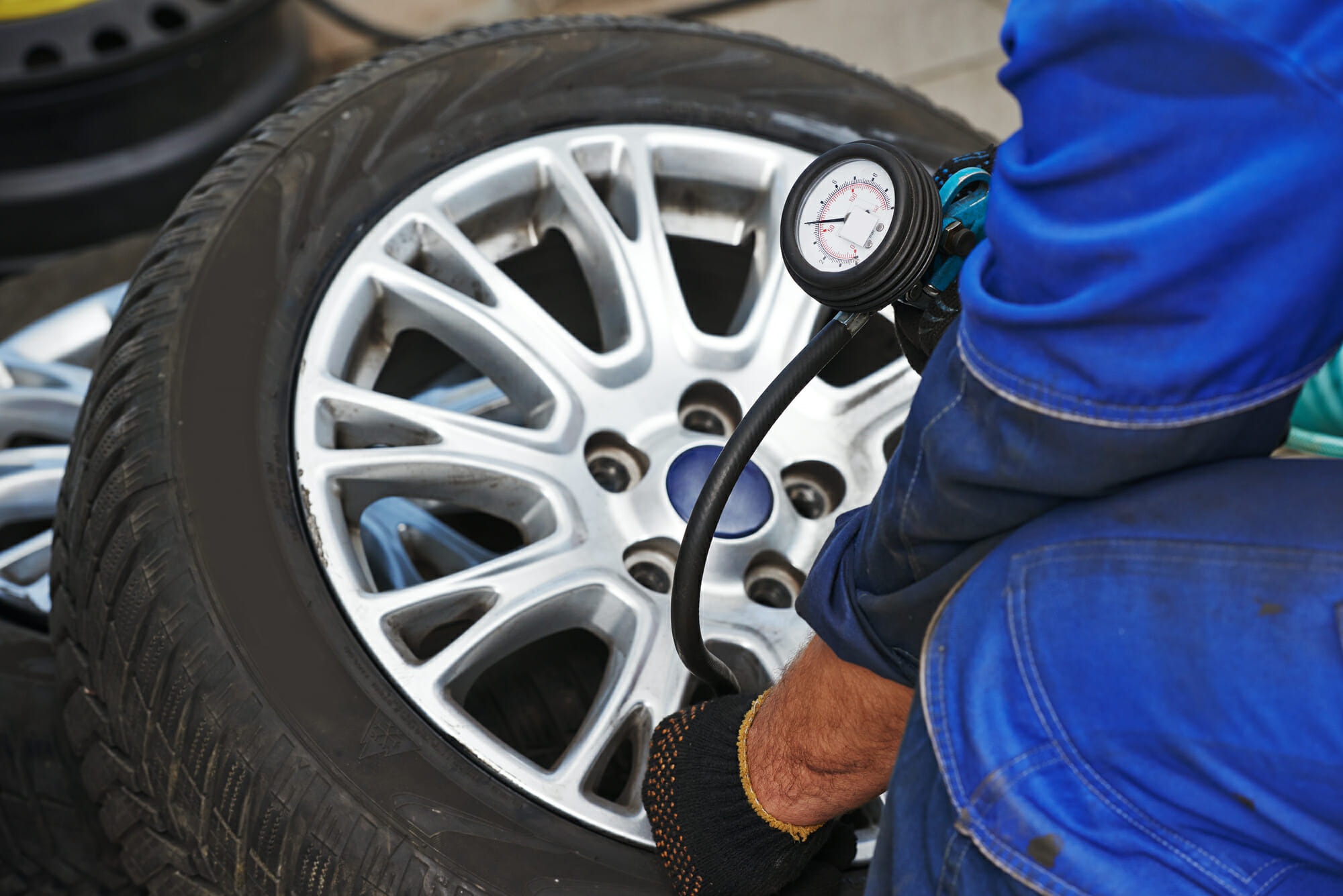Sporty, fun to drive, and designed to give you some power, the Mazda CX-5 can be a car that’s good at handling for everyday use. Buying the best tires on the market will make a big difference in your day-to-day driving experience.
What are the best tires for the Mazda CX-5?
- Touring: Bridgestone Turanza Quiettrack – $159.99/tire
- Performance: Sumitomo HTR A/S P03 – $104.99/tire
- All-Terrain: Pirelli All Terrain Plus – $174.70/tire
- Winter/Snow: Bridgestone Blizzak WS90 – $136.79/tire

As you compare your options, think about the type of driving you do. Where you live matters from a traction point. You also need to consider how often you’re on the freeway. All of this can help determine the best tires for the Mazda CX-5.
Best Tires for the 2020 Mazda CX-5

The more insight you have in car tire options, the better. Here’s a look at one key factor in choosing them – the type of tire. You also need to think about manufacturers and subtypes that are available for your vehicle before making a buying decision.
Touring – $159.99/Tire
Some Mazda CX-5 drivers will want to upgrade to touring tires, even though they are a bit higher priced overall. These tires help create a smooth ride, and they tend to be a good choice for all-around tires for most needs, depending on what you buy.
Grand touring all-season tires would be one of the best overall options for the Mazda CX-5 because they are designed for better winter traction and have good overall performance in wet and dry conditions. They also have a slightly better tread life, meaning they will last longer.
What makes these different from standard tires is the asymmetrical tread pattern. This gives them a higher speed rating and helps to provide all-season balance. Touring tires are all about performance, but not necessarily the highest tread wear though.
Customers who buy touring tires note there is a lot of difference between upper quality models and lower. Look for those with solid reviews. Some reviews report that touring tires are good for smoother rides on bumpy roads. Others like how they steer and handle.
Performance – $104.99/Tire
The Mazda CX-5 is already a fun car to drive, but upgrading to performance tires can take that to the next level. As a performance vehicle, these cars benefit from tires that are responsive and flexible enough for most driving conditions, including higher speeds.
There are a few things that make performance tires a good option for this vehicle. First, they are more affordable than touring tires, and, if you buy a quality product, they tend to last longer than others. They are also better at higher speeds than touring tires.
Performance tires come in a variety of grades. Most CX-5 drivers will appreciate the street/sport style vehicle. Performance all-season tires should be the base option, but high-performance tires tend to offer better traction and improved handling overall.
All-Terrain – $174.70/Tire
Your CX-5 gives you a lot of room to play, and for some, that may mean some light off-road fun. You can put all-terrain tires on this Mazda, and they can perform well by improving ride quality, comfort, and traction on unpaved surfaces.
All-terrain tires are also available in various grades. You probably do not need a max traction choice with this vehicle, but a more basic option. That is unless you really do take your CX-5 out on the road for adventure after adventure.
Most often, you’ll find the aggressive tread on these is the biggest consideration when choosing them. You want dependable traction for wet and dry roads, gravel, dirt, and maybe even some mud. The all-terrain tires can do this in most situations.
Customer reviews of all-terrain tires are usually very good as long as you don’t buy the lowest tier in quality. You don’t find many complaints. They do well and create a firm experience on paved roads. They feel good on uneven surfaces, too.
Winter/Snow – $136.79/Tire
Winter tires are a solid option overall for anyone driving in deep snow and dicey conditions. If you live in an area where the roads often consist of compacted snow or routine snowfall leaves you stuck, your Mazda CX-5 is likely to perform better with snow tires.
Be sure to choose those that have deep grooves as this will help push the snow and slush out from under the tires, helping to keep you from getting stuck. If you operate your vehicle on snow a great deal, go for the studded winter tires for added protection.
Keep in mind that studless tires tend to be a good option for winter driving even when the roads aren’t bad. However, studded tires are illegal in some areas, and, when they are not, they are loud and sometimes uncomfortable on dry surfaces.
Customers who buy winter tires are looking for durability and long life, which is something most of these options offer. You’ll also find these tires are often noted as being great for daily driving on freeways during the winter months because they don’t slip on the ice.
People Also Ask
Buying the Mazda CX-5 best tires makes sense for your long-term use. Here are some more questions about these tires you may want answers to for your vehicle.
Does the 2020 Mazda CX-5 come with a spare tire?
The Mazda CX-5 has a temporary spare tire. It is a lighter and smaller version of the tires rated for this vehicle, which means you should only use it in rare situations when you have a blowout. Use it until you can get into the dealership for repairs.
The tire is located in the cargo area of the car. Open the trunk; remove the carpeting and the cover. You’ll find the spare tire held down by a bolt that you can unscrew by hand. All of the tools needed, including a jack and lug wrench, are here.
What’s the recommended tire pressure for a 2020 Mazda CX-5?

The right tire pressure is a must for most cars. For 17-inch tires, use a psi of 34 for the front and rear tires. For 19-inch tires, use 36 psi for the front and back tires.
How do you reset the tire pressure indicator on a 2020 Mazda CX-5?
Your first step is to properly fill the tires with the right amount of air. Be sure the psi is right. Then, if the indicator is still on, follow a few steps to try to reset it on your own.
Turn to the “on” position, but do not go as far as to start the ignition. Hold the TPMS button (located near the steering wheel) for a few seconds. You’ll see it flash and blink three times. Release it.
Start the car and drive it. Within about 20 minutes, the light should be gone.